Saturday, September 7, 2002
The weather was much nicer today, sunny and cool. Hooray!
This morning we drove west across the center of the park, through
the charred remains of a forest decimated by the 1988 North Fork
Fire. I remember the media at the time getting all hot and bothered
over the Park Service's "let it burn" policy. It's no tragedy,
though; it's just nature. Someday it will be forest again. Virginia
Cascades Road circles through some of the worst of the fire damage
and swings by the 60-foot Virginia Cascades.
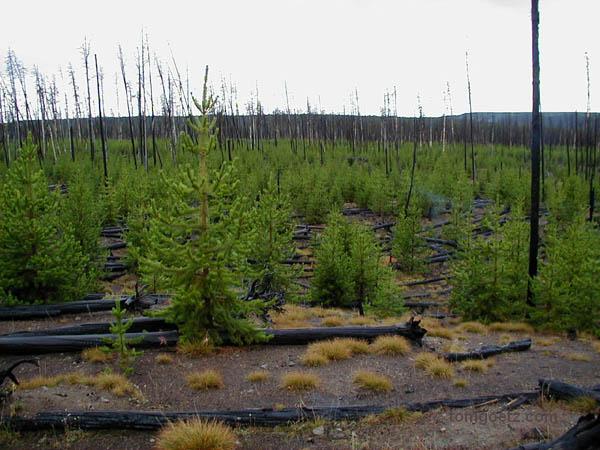
Rebirth after devastating fire
Norris Geyser Basin is the hottest geyser basin in North
America, and possibly the world. Temperatures as high as
459-degrees Farenheit were recorded a thousand feet underground
before scientists had to quit drilling to avoid destroying their
tools. The springs and geysers at Norris are very acidic, creating
a barren basin, devoid of vegetation. Acid geysers - Yikes!
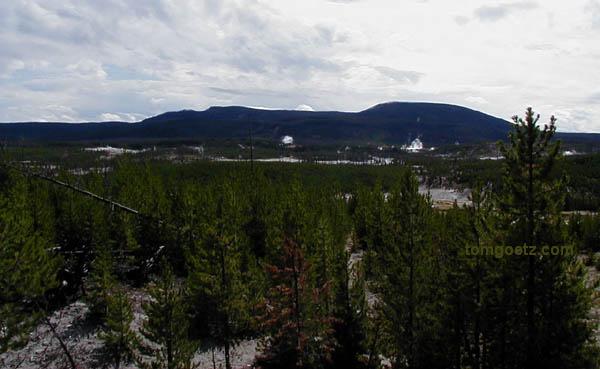
Norris Geyser Basin
The Norris area is actually divided into Porcelain Basin and
Back Basin. Porcelain Basin has a nice overlook of the whole basin
and a short path around the geysers for closer observation. As you
look around, you can see as many as three or four geysers spouting
at once!
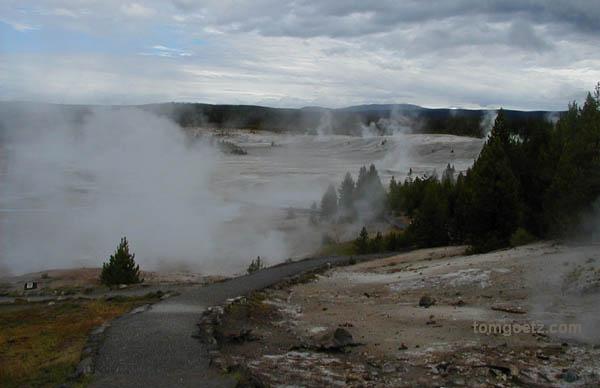
Porcelain Basin
Back Basin has a one-mile path you can follow through the
many features. It's home to Steamboat Geyser, the world's tallest
active geyser, sometimes erupting to a height of more than 300 feet
for up to 20 minutes, spewing over a million gallons of water into
the air. The full eruptions are totally unpredictable, and at the
time we visited, one hadn't occurred in over two years. Minor
eruptions of Steamboat Geyser, up to 40 feet, occur
frequently.
Most boring name for a geyser: Congress Pool, named for the
Fifth International Geological Congress. Best name for a geyser:
Porkchop Geyser.
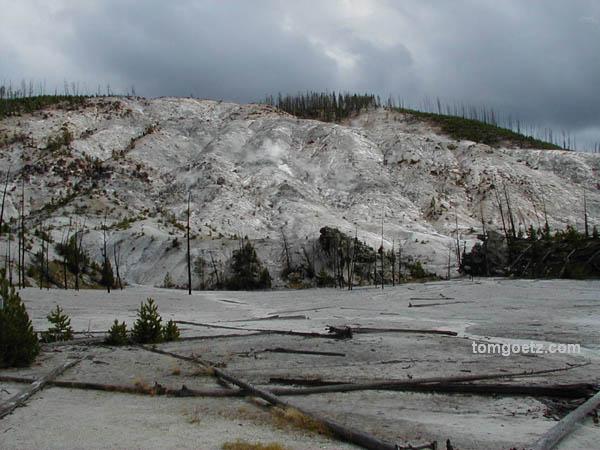
Back Basin
A 14-mile road following the Gibbon River connects Norris to
Madison. At the edge of Gibbon Meadows we saw a black bear and then
a lone elk. The road was in very poor condition at the time of our
visit. When we reached the 84-foot-high Gibbon Falls, the parking
area was closed due to road construction. We stopped in the road
long enough for a quick photo. The falls is located at the point
where the Gibbon River drops over the edge of the Yellowstone
Caldera, a volcano so massive that it encompasses most of
Yellowstone Park. The largest eruption ever to occur here was 2,400
times larger than the 1980 Mount St. Helens event, and the next one
could happen at any time.
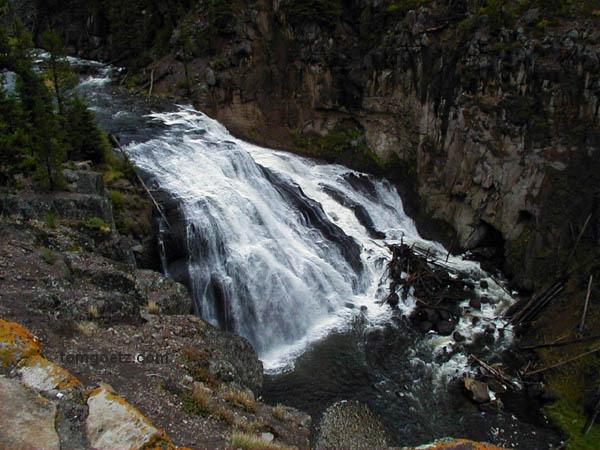
Gibbon Falls
We backtracked to Norris Junction and turned north toward
Mammoth Hot Springs. At the turnoff to Indian Creek Campground the
cutest coyote ever was playing and rolling around in the grass. I
wanted to take him home with us, but both Spike and the National
Park Service would highly disapprove.
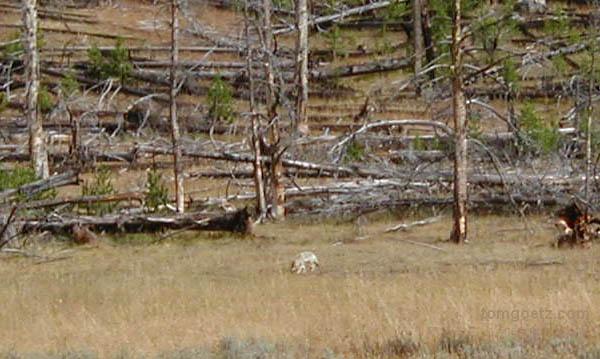
Our coyote buddy. He didn't seem wily at all.
The strange-looking Sheepeater Cliff began as a lava flow. As
the lava cooled, the lava fractured into a set of columns. The
cliff is named after the Shoshone Sheepeater Indians, the original
occupants of Yellowstone.
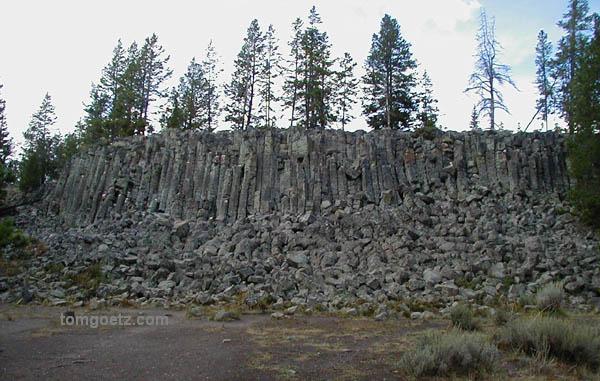
Sheepeater Cliff
Continuing north, we passed through a narrow gorge and
crossed over the Golden Gate viaduct, an impressive piece of
engineering clinging to the side of a cliff. Our guidebook warned
us we'd want to say our "Hail Marys" as we drove over Golden Gate,
but it wasn't actually scary.
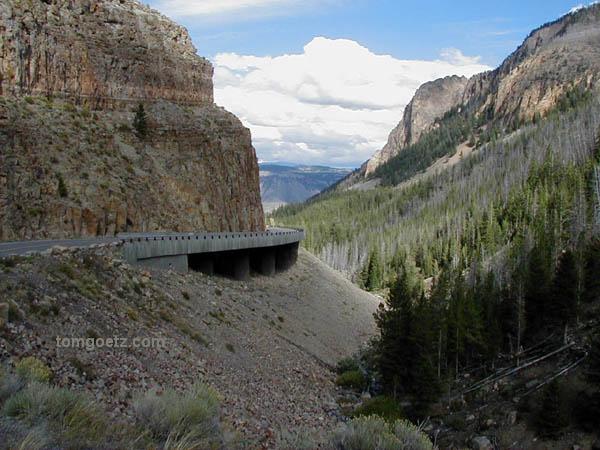
Golden Gate viaduct
Mammoth Hot Springs lies near the norther border of
Yellowstone Park at an elevation of 6,230 feet. Water seeping into
the ground here meets hot gases underneath the surface and forms an
acid solution. As the hot, acidic mixture works its way to the
surface, it dissolves massive amounts of limestone. When the
dissolved limestone is exposed to air, it becomes solid again and
is deposited in the resulting terraces and mounds.
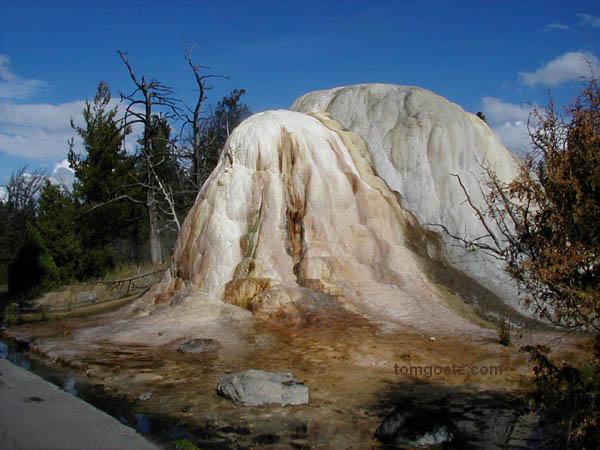
Orange Spring Mound, Mammoth Hot Springs
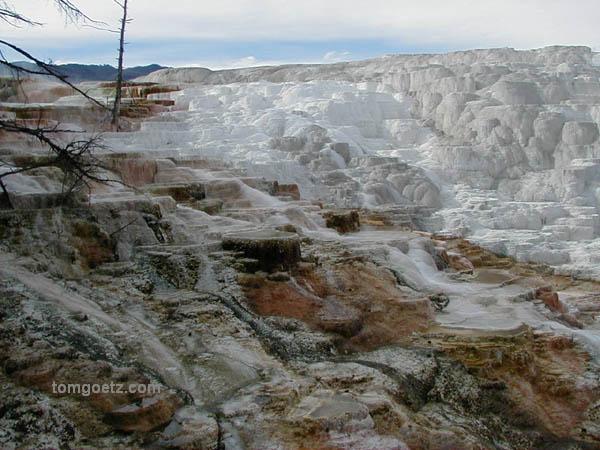
Angel Terrace
Thousands of years of hot, mineral-rich water flowing from
the earth has created huge, multi-colored terraces and pools. The
formations are constantly changing, and the area looks totally
different than the other times I've visited, once as a child and
once as a teenager. The limestone accumulates at a rate of over two
tons per day, and the formations grow as much as eight inches per
year. Don't miss this area. It doesn't have the flashiness of the
geysers, but it is awesome!
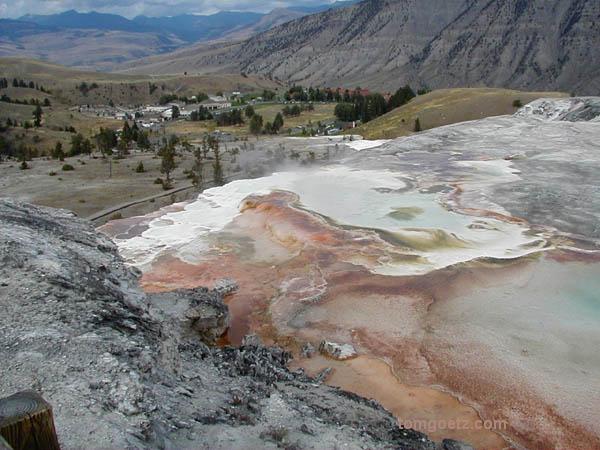
From the Main Terrace
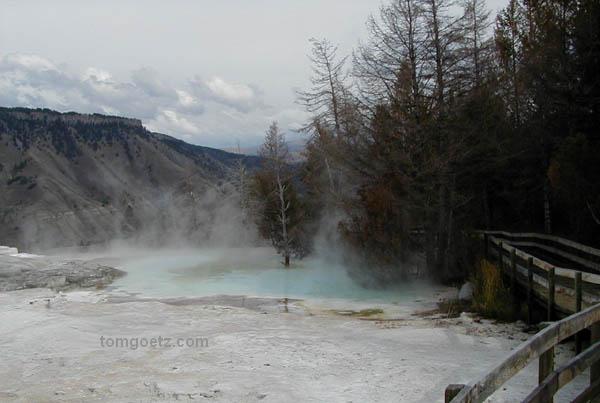
The hot, acidic water claims more trees
East from Mammoth to Tower Junction we passed two more very
fine waterfalls, Undine Falls, 110 feet, and Wraith Falls, 100
feet. Undine can be seen from a roadside pull-out, but Wraith
requires a one-mile hike. Waterfalls rule. What is it about the
water-gravity combo that's always so compelling?
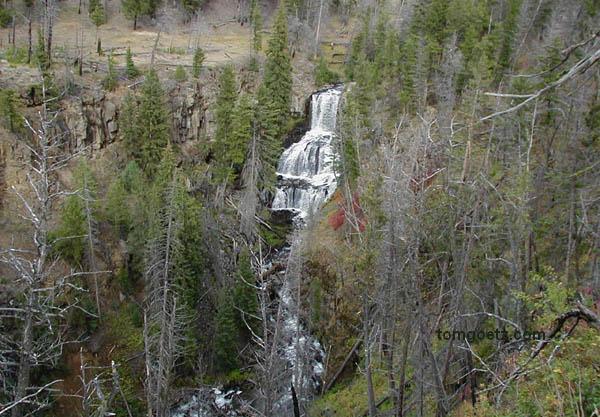
Undine Falls
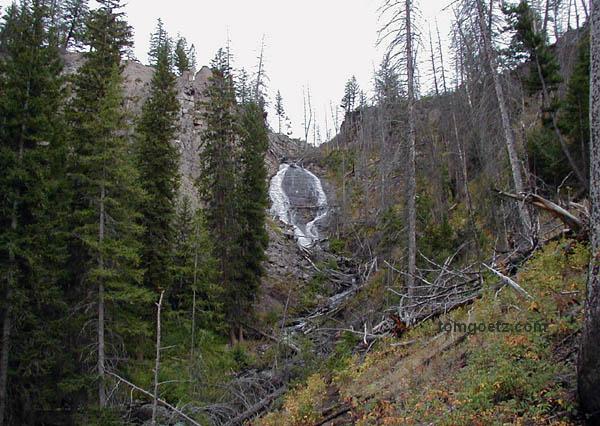
Wraith Falls
This drive goes through one of the most open areas of
Yellowstone, all the better for spying wildlife. We got very close
to a pronghorn antelope, then at Elk Creek we joined a gaggle of
people gaping at some moose. The moose really blend in with the
trees, but we saw one bull moose and several baby meese.
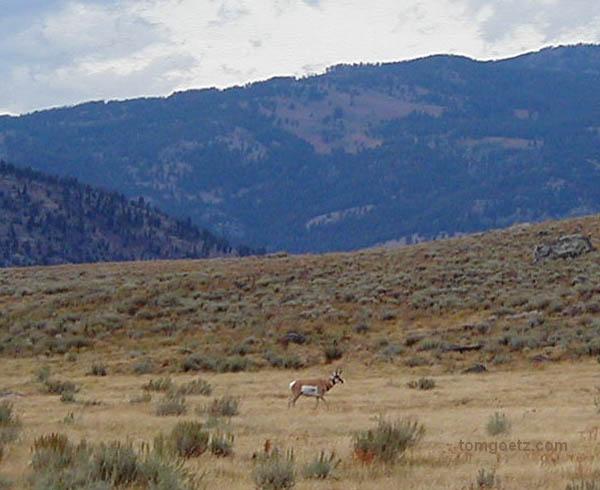
Pronghorn antelope
The petrified tree in the photo below isn't in some kind of
trouble. A second tree that used to stand nearby was stolen piece
by piece by idiots, and now the remains of this one has been locked
behind iron bars for its own protection. Take nothing but memories,
people! And photographs, of course.
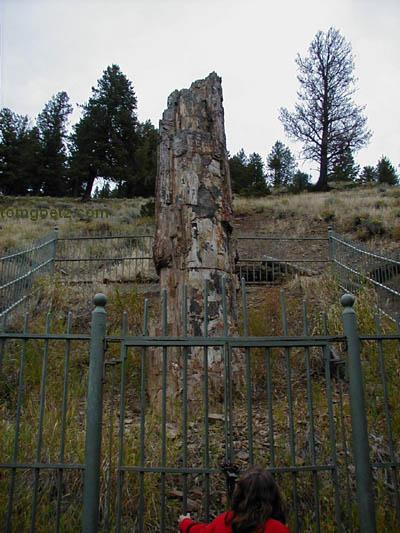
Beware of tree
South of Tower Junction, heading "home" for the night, huge
herds of elk could be seen on the mountainsides. They can be heard
trumpeting from miles away! Several mule deer were foraging near
the road as dusk fell. I again had to drive especially carefully -
an animal-car collision wouldn't be good for anyone. At the turnoff
for Canyon Village, a large bull moose was standing chest deep in a
pond eating his dinner.
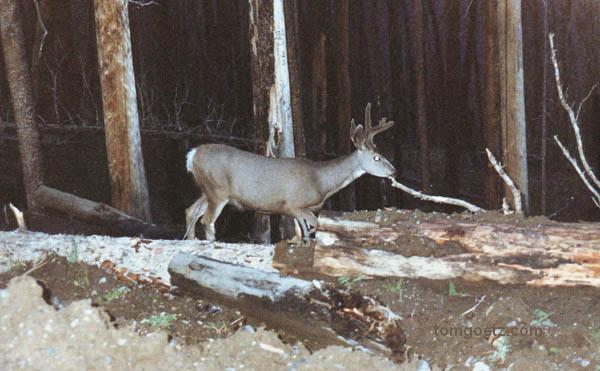
Mule deer
Back at the cabin, a bat had somehow gotten trapped in our
bathroom! Tom captured it in the wastebasket and set it free
outside, while I helpfully yelled instructions from the far side of
the room like "Ohmygod, get that bat outta here!"
102 miles today and more gas-station sandwiches. Yuck. This
gas-station food is just about on my last nerve.
|
















